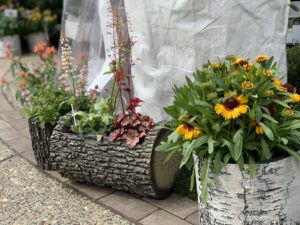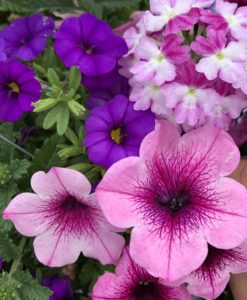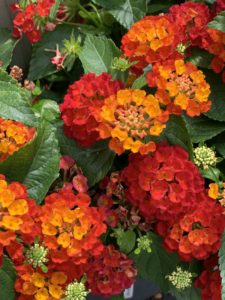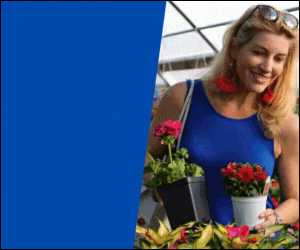
President & CEO
Welby Gardens
Ours is a quick-moving, no-nonsense business. When we are in the heat of the season, there is little time for a lot of hand holding or a prolonged courtship with every customer that you encounter on any given day. Time is a precious commodity and every contact and moment must count. So, it is vital to get down to business to determine the size, scope of task, and the competence of the person on the phone or in front of you.
Sizing up the customer: If the customer is in retail, you must determine if the business is new or existing, how long they have been in business, where they are located and how much time the individual has been with the company. If the customer is in landscape, how large is the project, where is it located, and how much experience has the person had in the field? The level of experience will determine the level of complexity of further discussion. If the individual is inexperienced, the discussion falls to KISS (keep it simple stupid) delivered in a very smooth, non-pretentious way. If otherwise, prepare to slow down and ask a lot more questions.

In retail, what type of business is it? Is it seasonal or year round? Garden center, nursery, hardware, fruit stand, farmer’s market, plant sale, or other seasonal set up? How large is the retail space? Is the customer just looking for one or two scarce items? Are they interested in just instant color or a complete line up of your product offering and possibly weekly or bi-weekly promotion programs? Has the customer been doing business with other local sources? Who those other sources are will tell you a lot about what type of product mix they are using, and what level of quality they are expecting. What is their price sensitivity and who might they see as competitors? Does the retailer have a budget for the initial order?
Provide some promotional material for new products that the customer might not be aware of, and that they can associate with your firm going forward. If the retailer is new to the business, ask them if they would like for you to put together a set quantity of best sellers based on a set budget, seasonally appropriate and sequentially more complex with later shipments. This has been extremely helpful for beginners, avoiding undo pain from over purchasing the wrong products and giving them the quickest turns and the most return customers. The sales season is very short, and you want to instill confidence in the new buyer.
 For the landscape customer, is the project public, commercial or residential? Has the individual done this type of job before? Has a client expressed problems or frustrations with previous applications? What part of town or region will determine the general type of soil and water. How many beds, sizes, shapes, and exposures? What is the overall budget? What kind of soil prep, irrigation and maintenance plan is intended? Is the customer looking for sustainability, drought tolerance or slash for the buck?
For the landscape customer, is the project public, commercial or residential? Has the individual done this type of job before? Has a client expressed problems or frustrations with previous applications? What part of town or region will determine the general type of soil and water. How many beds, sizes, shapes, and exposures? What is the overall budget? What kind of soil prep, irrigation and maintenance plan is intended? Is the customer looking for sustainability, drought tolerance or slash for the buck?
If a project is public or commercial, usually simple, dramatic and bold makes the best statement. If beds are large, more complex solutions may be needed to fill the overall space. Does the property contain signs, established landscape, or a building of a certain color? Does the client want certain colors or want you to avoid certain colors? Has the landscaper had problems or preferences for certain plants, annuals or perennials? It is always good to know which are the most “political” beds, such as where the office staff parks or where the most curb appeal is needed, in order to put their money where it counts the most.
If a project is residential or even an estate, then novelty, uniqueness or more complexity may be desired. This is not always the case. This will depend on the experience of the landscaper or ultimately the client to make wise selections for easy installation and care going forward. Residential customers tend to be more choosey about color and plant selections, so make sure that the landscaper understands this. Determine if the landscaper needs help to design the individual beds. The final budget is as important as spacing and selection of plants. If the installation is for a special event such as a graduation or wedding, then timing, maturity and size of material become all important.
 Color selection will determine the mood of a given setting: red is the first color that the eye sees and can make the bed appear closer, yellow draws attention, pink is charming and feminine, white and silver illuminate dark spaces, and blue is relaxing and cool and makes the space appear deeper. Monochromatic combinations are the easiest to combine. Chromatic color schemes are soothing and harmonic. Contrasting colors are exciting and energetic. Color can come from foliage, texture and various sizes and shapes of blooms. Try to determine what their client is looking for.
Color selection will determine the mood of a given setting: red is the first color that the eye sees and can make the bed appear closer, yellow draws attention, pink is charming and feminine, white and silver illuminate dark spaces, and blue is relaxing and cool and makes the space appear deeper. Monochromatic combinations are the easiest to combine. Chromatic color schemes are soothing and harmonic. Contrasting colors are exciting and energetic. Color can come from foliage, texture and various sizes and shapes of blooms. Try to determine what their client is looking for.
It is helpful to offer up colorful sales sheets with various combinations of either tried-and-true plant combinations or new possible combinations for the more experienced landscapers. This gets the discussion on a more concrete footing, and it elicits positive images for action.









